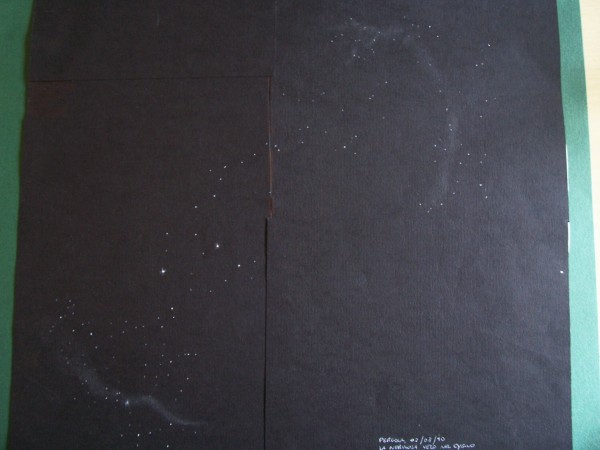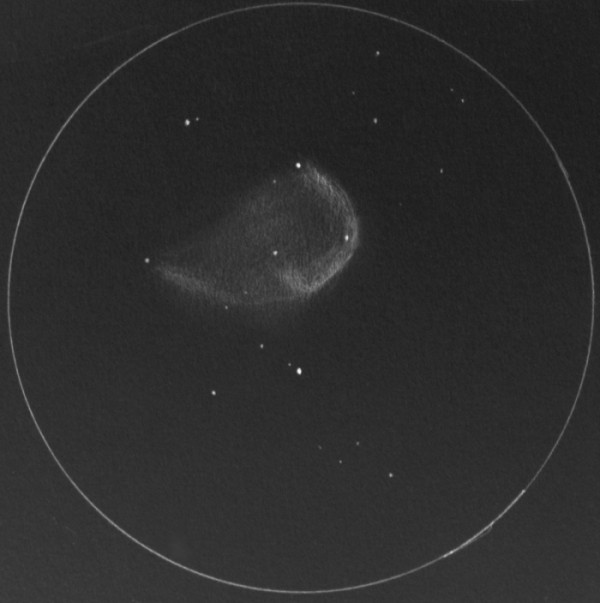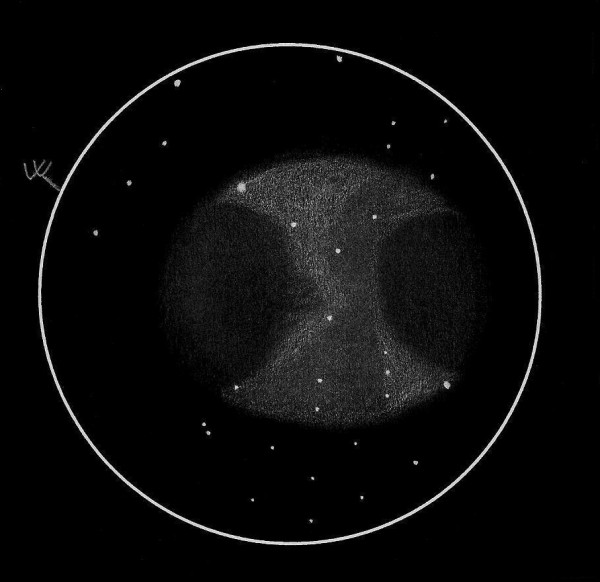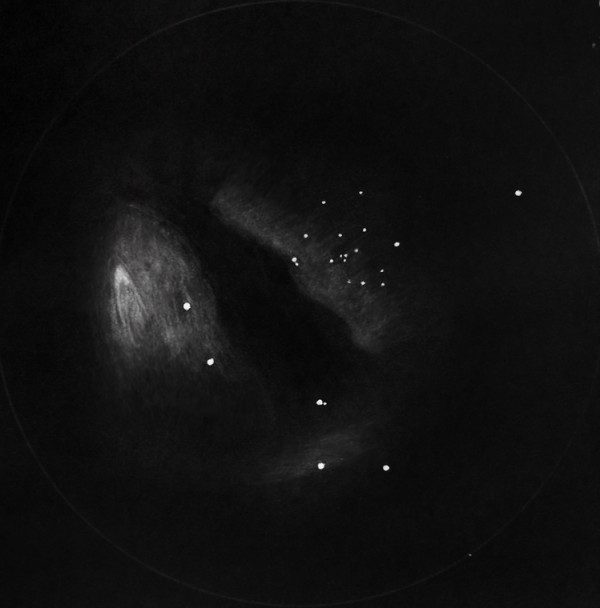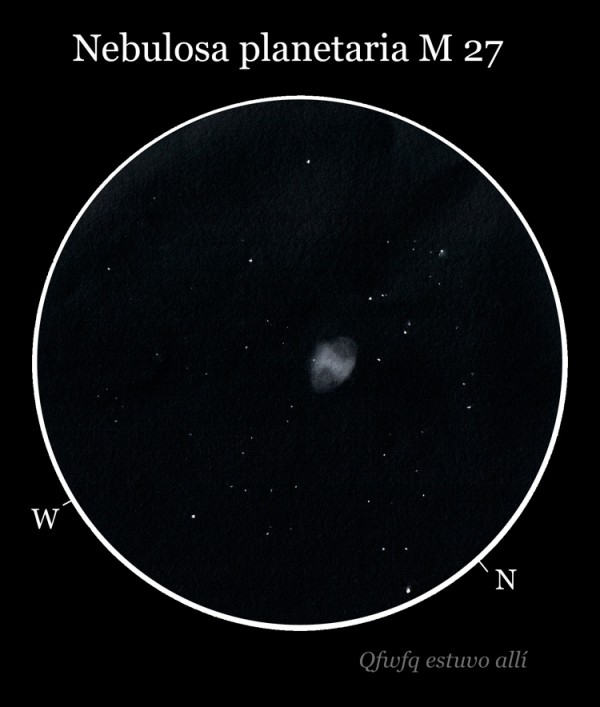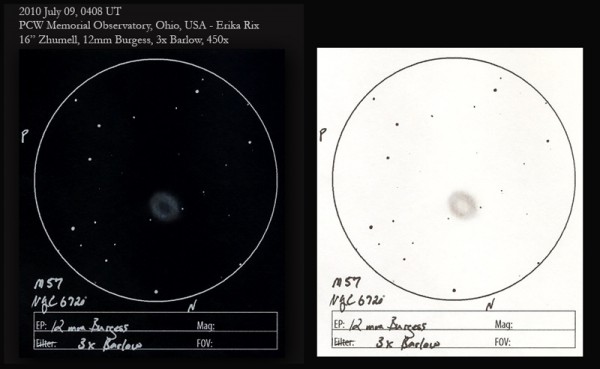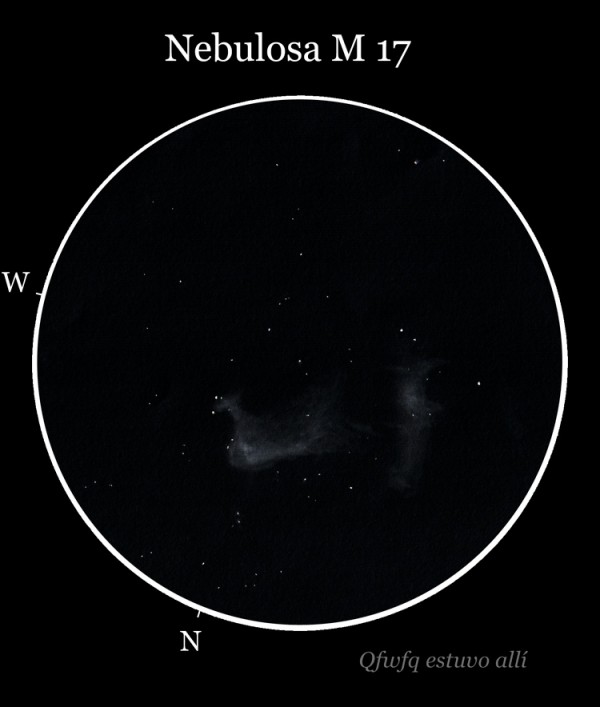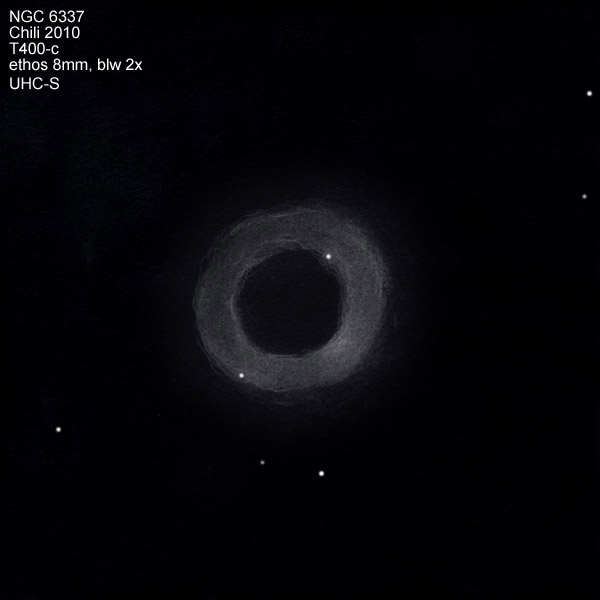Subject: Giant Veil Nebula
Hello Artists,all o.k.?I’m in holyday in this moment,the break from work,so, for me….very good days!!!
I sent my first sketch of great nebula in Cygnus made with my dobson 10″ and great old eyepiece,the Meade “Reserch Grade”12,4mm + UHC-S.
At first time i want made this sketch in one page of my album,but….the impressive dimension oblige me for two pages!
I sent you three photos of sketch,the particulars and totally of this.It’s impossible to insert in my scanner….
Excuse me for my english,clear sky.
At next and compliments at all sketchers for your works.
Ciao a tutti,Giorgio.
Site:Pergola,Serraspinosa Hill 400 meters of altitude,
Marche Region,Center Italy.
Date:2 of August 2010
Instrument:Dobson GSO 10”
Eyepiece:Meade 12,4mm “Reserch Grade”
Filter:Baader UHC-S
Seeing :Good
Air: Fresh,no wind.
Technics:White pencill and penn on black paper “Fabriano 3”
Giorgio Bonacorsi
